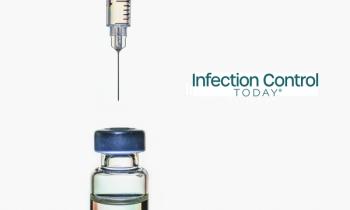
Stethoscope Hygiene, UV Technology, and the Realities of Muscle Memory: Experts Debate Practical Infection Prevention
Stethoscope hygiene, UV technology, and dwell time failures took center stage in this second installment of a panel of experts explored why routine disinfection still lags and what must change in clinical practice.
In this second part of a 3-part installment, a panel of infection prevention and operating room leaders tackled an often-overlooked but high-impact issue in patient safety: the cleaning and disinfection of stethoscopes and other handheld medical devices.
In this second part of a 3-part installment, a panel of infection prevention and operating room leaders tackled an often-overlooked but high-impact issue in patient safety: the cleaning and disinfection of stethoscopes and other handheld medical devices. Their discussion moved from the practical to the philosophical, weaving technical challenges with human behavior, pandemic memory, and the realities of workflow in busy clinical environments.
Speakers included:
- Elsy Mady, MSN, BSN, RN, CIC, independent infection preventionist consultant
- Aaron Woodall, MPH, CIC, LTC-IP, chief of infection and control for the US Department of Veterans Affairs
- Peter Graves, MSN, RN, CNOR, independent perioperative consultant, speaker, and peer-reviewed writer
Graves opened with a straightforward concern. “I really want my anesthesia providers, whether they are [Certified Registered Nurse Anesthetists], [medical doctors], [doctors of osteopathic medicine], whoever they are, I really want them to think about cleaning their stethoscope prior to patient contact, particularly if the wound is going to be nearby.” Despite its importance, this simple behavior is far from universal. The operating room complicates matters further because anesthesiologists typically rotate through several devices to listen to heart and lung sounds. “That makes standardizing the cleaning protocol a little bit more difficult.”
The discussion then turned to engineering controls and whether ultraviolet devices could offer a solution. Graves noted that UV boxes are already popular for phones and tablets and asked for perspectives on their value for stethoscopes.
Woodall responded cautiously. “It just depends on the type of UV that is being used and what type of device. There are so many out there. I probably get anywhere between 3 to 5 different types of UV vendors emailing me weekly.” While some devices may be effective, others make unrealistic claims. Facilities that install UV hygiene stations sometimes see strong initial interest that quickly fades. “It is kind of like Christmas presents. They are cool for a little bit, but then after a while, you are like, it is whatever.”
Mady connected this drop in enthusiasm to human behavior and pandemic experience. During early COVID-19, fear pushed people to extraordinary hygiene measures. “Everybody was like really paying attention to all the details and seeing everything as a risk. That is why we saw everybody spraying everything, even grocery bags.” But once the emergency passed, attention faded. “Because they do not fear the consequences, they do not feel the risk.”
Woodall agreed. “Easy times breeds soft minds.” The problem, they explained, is that people focus on a single threat during a crisis but forget the ongoing danger of antibiotic-resistant organisms. “If they really look and understand what that problem is, they would likely have the same concern as during the pandemic.”
The moderator offered another limitation of UV technology. “UVC only works on the surfaces that it can reach, so it is not going to do a darn thing for places the light cannot get to.” They added that fear also plays a role. “There are still a lot of people who do not understand UVC. They think that all of them are dangerous, and they do not want it.” The technology can be safe, but only when used correctly.
Back on the topic of manual disinfection, Graves pointed out that stethoscope hygiene is closely tied to muscle memory. “You think of the stethoscope as an extension. Some of the studies talked about it being the third arm of the healthcare provider.” Developing the habit of using a wipe after every use should mirror the instinctive response of an athlete reacting in competition. “My daughter played college volleyball, and [she and her team] practice and practice and develop what is called muscle memory so that in a game they know instinctively what to do.” Hand antisepsis and stethoscope hygiene require the same repetition.
Yet real-world constraints make consistency difficult. “On the nursing floors or in the emergency departments, it is going to be a much higher frequency, and so it is going to be much more difficult.”
The moderator illustrated the importance of proper technique with a personal experience at an eye clinic. A staff member quickly wiped a chin rest before using it on the next patient, even though visible makeup remained. “She looked at me like I had 3 heads when I said I am not touching that until it dries.” Most patients would not think twice. “What they do not understand is it is not killing anything if you do not let the dry time happen.”
Woodall echoed this. Cleaning is not disinfecting. “Their general thought is ‘Okay, I need to make sure that I clean the surface,’ but cleaning is not disinfecting. That is the piece that is generally missed.” Providers in areas with complex disinfection practices, such as [gastroenterology] or [operating room], tend to understand the nuances better. Others may rush due to operational pressure.
Graves described a facility using a wipe with a 10-minute dwell time while allowing only 2 minutes for surfaces to dry. Staff then wiped the surface again with a dry towel. “It is defeating the purpose of trying to get the efficacy that you are trying to get.” He emphasized the importance of selecting products with realistic dry times and following [instructions for use], especially for sensitive devices like stethoscopes.
Mady reinforced that education gaps contribute to these issues. “When we are at nursing school, we get a lot of infection prevention courses. But I do not think that this course is happening at [medical] schools.” Globally, many physicians lack foundational training in disinfection principles. Combined with fast-paced care, this creates barriers. “Maybe you need 25, over 24 hours, to achieve what you need to do.”
Manufacturers also bear responsibility. Mady recalled testing a product that advertised a 10-minute dry time. “No one will wait 10 minutes. Manufacturers need to consider the practicality of their products.”
The panel concluded that equipment hygiene is a blend of human factors, workflow, product design, and education. Whether through UV devices or manual wipes, consistent stethoscope and device disinfection must become a routine expectation rather than an aspirational goal. As Graves noted, “We all need to be cognizant of what we carry around with us.” The path forward requires realistic tools, better training, and a renewed commitment to patient safety.
Newsletter
Stay prepared and protected with Infection Control Today's newsletter, delivering essential updates, best practices, and expert insights for infection preventionists.





